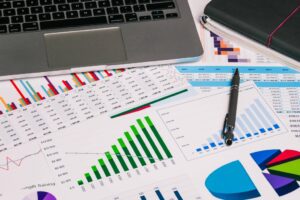
Markup refers to the amount added to the cost price of a product or service to cover expenses and profit. It is the percentage of cost price you add on to reach the selling price of the item. Margin strategies allow businesses to control their profitability better and achieve their desired financial goals. By calculating profit as a percentage of the selling price, companies can more accurately determine the impact of pricing decisions on their bottom line. You may want to read about the 5 Pricing Scenarios to Help you Not Lose Profit Again.
- While a standard markup rate might work in stable markets, it may not be suitable when dealing with highly competitive industries or price-sensitive customers.
- Let’s say the cost for one of Archon Optical’s products, Zealot sunglasses, is $18.
- However, for convenience and efficiency, utilizing a markup calculator can save you valuable time and effort.
- It is a measure of profitability, representing the portion of revenue that remains after deducting all costs, including both variable and fixed expenses.
- Defining your markup as a percentage above cost ensures that you continue earning sales revenue as costs increase.
Pricing and Sales Support From an Automated Back Office

Maintained markup ensures that your pricing strategy remains effective and aligned with your goals, even as circumstances change. Markup is the amount you add to the cost of a product to get the sale price. Markup shows how much money is being made on an item relative to its original cost and is generally expressed as a percentage. Unlike margin, you control markup – while it has to be managed thoughtfully, it’s one lever that can be pulled to raise profitability.
- Manage complex financials, inventory, payroll and more in one secure platform.
- We think you’ll be surprised at how easy pricing can be with the right tools.
- External factors are those the producer has little or perhaps no control over.
- Profit margin is more about evaluating the overall profitability once the product is sold.
- You should use margin – whether gross profit, net profit or operating margin – when you want an accurate measure of profitability.
Grow your maker business!
And if you confuse the two, you might over or undercharge your customers, make a mistake on important accounting documents, or mess up your revenue forecasting. To convert, your messaging must be focused, data-backed and designed for how people actually read. We put together a list of the best, most profitable small business ideas for entrepreneurs to pursue in 2025. GrowthForce accounting services provided through an alliance with SK CPA, PLLC. Learn how to grow your profits even in the toughest economic conditions.
Markup vs Margin Calculator: Know the Difference, Boost Your Profits
Comparing margin vs markup strategies shows that they differ in calculating profit percentages, resulting in different selling prices and profit amounts. In the example above, the markup strategy resulted in a selling price of $70, while the margin strategy led to a selling price of $83.33. Margin (also known as gross margin) is sales minus the cost of goods sold. For example, if a product sells for $100 and costs $70 to manufacture, its margin is $30.

Any person with a non-financial background will look like a transaction is obtaining a larger profit if they are presented with Markup numbers than corresponding CARES Act Margin numbers. In this blog, we’ll explore how their differences impact your bottom line. We’ll also provide a clear understanding of related concepts like profit margin, markup and markdown. Markup is what you add to the cost of your items to make a profit. Your business should use margin to judge performance and profitability and paint a clearer picture of how your company operates. That’s because gross margin can be compared to net margin, shining light on other operating costs.
- Again, these two concepts play a key role in determining how much profit you make.
- Adding the markup amount to the cost price yields the selling price of $80.
- For that same sale, businesses and investors use profit margin to measure the percentage of selling price that’s kept as profit after covering all costs and expenses.
- By accurately tracking inventory levels, businesses can avoid overstocking or understocking, which can directly affect pricing strategies.
- If your costs change often then you probably spend a lot of time making price adjustments.
- You would often write margin as a specific amount in currency or as a percentage.
Profit Margin vs. Markup: An Overview

Instead, you’ll have to consider things like perceived value, https://www.bookstime.com/articles/startup-bookkeeping shipping costs, transaction costs, and how much your competitors are charging. Often, different types of businesses have standard markup rates or ranges of markup rates. For example, a supplier who sells huge amounts of products may mark up their items 7% to 10%, but a gift shop in a touristy area might mark up their products by 50%.
Margin formula
Different products have different cost structures and demand levels. Tailoring your markup ensures you maximize profitability without scaring off customers. Reviewing your markup and margin regularly helps keep your profits on track—instead of realizing too late that you’re undercharging.


It’s essential for understanding the overall profitability of your products. Setting standard markups for different product categories helps you calculate appropriate sale prices, even if the cost to your business changes. The first & foremost step in determining a firm’s profitability is defining its products’ pricing structures. It can be realized by understanding the margin and markup, as these numbers play an important role in determining the revenues & bottom line in explain the difference between a markup and a margin the financial statements. However, in this technological age, businesses use pricing platforms powered by artificial intelligence like SYMSON.
